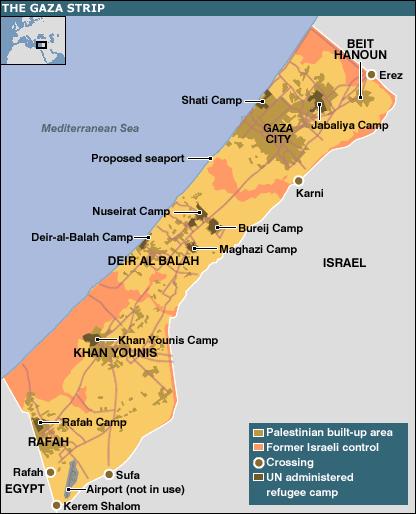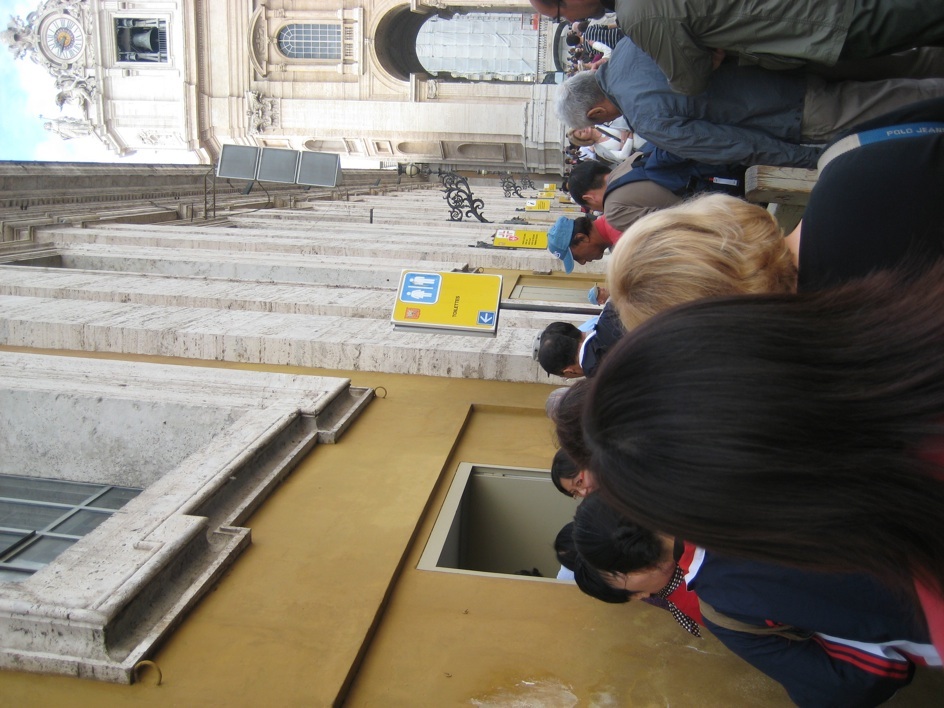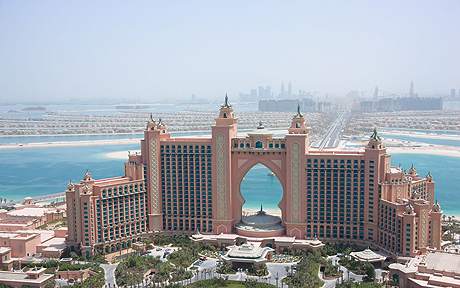The Bloodbath in Gaza: Separating the truth from the hype

Global Research, January 7, 2009
“Bandits with planes …
came through the sky to kill children
and the blood of children ran through the streets
without fuss, like children’s blood.” (Pablo Neruda)
In a rare moment of honesty, the New York Times divulged the real motive behind the bombardment and invasion of Gaza. In Ethan Bronner’s article, “Israel Weighs Goal: Ending Hamas Rule, Rocket fire, or Both”, Israeli Vice Premier Haim Ramon said, “We need to reach a situation in which we do not allow Hamas to govern. That is the most important thing. If the war ends in a draw, as expected, and Israel refrains from reoccupying Gaza, Hamas will gain diplomatic recognition…No matter what you call it, Hamas will obtain legitimacy.”
According to the Times: “In addition, any truce would probably include an increase in commercial traffic from Israel and Egypt into Gaza, which is Hamas’s central demand: to end the economic boycott and border closing it has been facing. To build up the Gaza economy under Hamas, Israeli leaders say, would be to build up Hamas. Yet withholding the commerce would continue to leave 1.5 million Gazans living in despair.” (Israel Weighs Goal: Ending Hamas Rule, Rocket fire, or Both; Ethan Bronner)
If Israel wants to prevent Hamas from “obtaining legitimacy,” than the real objective of the invasion is to either severely undermine or topple the regime. All the talk about the qassam rockets and the so-called “Hamas infrastructure”, (the new phrase that is supposed to indicate a threat to Israeli security) is merely a diversion. What really worries Israel is the prospect that Obama will “sit down with his enemies”–as he promised during the presidential campaign–and conduct talks with Hamas. That would put the ball in Israel’s court and force them to make concessions. But Israel does not want to make concessions. They would rather start a war and change the facts on the ground so they can head-off any attempt by Obama to restart peace process.
Just days ago, Obama advisor, Zbigniew Brzezinski, said in a televised interview, that the last eight years proves that resolving the Palestinian/Israeli conflict is critical to US interests in the region. He added that the recent fighting shows that the two parties cannot achieve peace without US involvement. Brzezinski’s comments suggest that, at the very least, the Obama camp is considering low-level (secret?) talks with Hamas representatives. Every day that Hamas abstains from violence; its legitimacy as a political party grows and the prospect of direct negotiations becomes more likely. This is Israel’s worst nightmare, not because Hamas constitutes a real threat to Israeli security, but because Israel wants to install its own puppet regime and unilaterally impose its own terms for a final settlement. Neither Ehud Olmert or any of the candidates for prime minister have any intention of getting bogged down in another 8 years of fruitless banter like Oslo where plans for settlement expansion had to be concealed behind an elaborate public relations smokescreen. No way. The Israeli leadership would rather skip the pretense altogether and pursue their territorial aims openly as they have under Bush. And the goal is the same as always; to integrate the occupied territories into Greater Israel and leave the Palestinians trapped in bantustans. Negotiations just make that harder.
Ariel Sharon’s senior advisor, Dov Weisglass, clarified Israel’s position three years ago when he admitted, “The disengagement [from Gaza] is actually formaldehyde. It supplies the amount of formaldehyde that is necessary so that there will not be a political process with the Palestinians… this whole package that is called the Palestinian state has been removed from our agenda indefinitely.” “Formaldehyde”; that says it all. The point of the Israeli withdrawal from Gaza was to silence critics and to make it appear as though the Palestinians had achieved some type of statehood. It was a complete sham. Sharon believed that disengagement would stop foreign leaders from badgering him to sit down with the Palestinians and work out a mutually-acceptable agreement. He never expected that elections would throw a wrench in his plans and raise the credibility of Hamas to the extent that it has today. In the last two years, Hamas hasn’ t launched one suicide mission in Israel, which shows that it has abandoned the armed struggle and can be trusted to negotiate on its people’s behalf. That scares Israel, which is why they initiated hostilities. Now, they need to seal the deal by either removing Hamas before Obama is sworn in or face pressure from the new administration for dialogue. Meanwhile, Israeli troop movements indicate that a plan may be in place to divide Gaza into three parts, thus making it impossible for Hamas to rule.
The UK Guardian confirms that the invasion was really about regime change not rockets or Hamas infrastructure. According to the Guardian: “A couple of days into the assault on Gaza, Israel’s ambassador to the UN, Gabriela Shalev, said it would continue for ‘as long as it takes to dismantle Hamas completely’. Infuriated Israeli officials in Jerusalem warned her that such statements could set back the diplomatic offensive. Dan Gillerman, Israel’s ambassador to the UN until a few months ago, was brought in by the Foreign Ministry to help lead the diplomatic and PR campaign. He said that the diplomatic and political groundwork has been under way for months.
“This was something that was planned long ahead,” he said. “I was recruited by the foreign minister to coordinate Israel’s efforts and I have never seen all parts of a very complex machinery – whether it is the Foreign Ministry, the Defence Ministry, the prime minister’s office, the police or the army – work in such co-ordination, being effective in sending out the message.” In briefings in Jerusalem and London, Brussels and New York, the same core messages were repeated: that Israel had no choice but to attack in response to the barrage of Hamas rockets; that the coming attack would be on “the infrastructure of terror” in Gaza and the targets principally Hamas fighters; that civilians would die, but it was because Hamas hides its fighters and weapons factories among ordinary people.
Hand in hand went a strategy to remove the issue of occupation from discussion.” (UK Guardian, “Why Israel went to war in Gaza”)
The invasion was mapped out months ago, right down to the bullet points that were passed out to friends in the media. Nothing was left to chance. That said, the public relations campaign was on full display over the weekend when Israeli ground troops and armored divisions swept into Gaza unopposed. CNN had a coterie of ardent Zionists on hand to justify the invasion in a carefully scripted analysis of developments. Retired Brigadier Gen. David Grange accompanied the blatantly pro-Israel Wolf Blitzer saying that the IDF had been “lured” into Gaza by Hamas so that Hamas could execute its plan for “urban warfare”. Utter nonsense. Grange implied that the subsequent slaughter of civilians was the work of Hamas, not Israel. Even by CNN’s abysmal standards, this is new low.
The media has worked in concert with the IDF throughout, spinning a rationale from whole cloth and cheerleading from every available soapbox. But recent polls show that the public has remained skeptical. Anti-Israel protests have sprung up in capitals across the world, and support for Israel is at its nadir. . Many people are simply shocked to see the most advanced, technological weaponry in the world being used in densely populated areas where collateral damage is bound to be heavy. It just makes Israel look like a bully while the media looks like an enabler. So far, the war has been a public relations catastrophe. Over 500 Palestinians have been killed and 2,400 wounded in a debacle of Biblical proportions. Every day, new photographs circulate on the internet showing the carnage produced by the steady bombardment. On Monday, the IDF killed two more Palestinian families, in two separate incidents. The mother, father and eight children were killed when their house was bombed by an American made F-16 early Monday morning. Another family in the Shati refugee camp, west of Gaza City, was butchered when their home was struck by a shell from an Israeli ship off the coast. The civilian toll continues to balloon with no end in sight.
Here’s how one Gaza resident summed up the bombing in an interview with an AP journalist: “The Israeli forces attack everywhere. They have gone crazy. The Gaza Strip is just going to die … it’s going to die. We were sleeping. Suddenly we heard a bomb. We woke up and we didn’t know where to go. We couldn’t see through the dust. We called to each other. We thought our house had been hit, not the street. What can I say? You saw it with your own eyes. What is our guilt? Are we terrorists? I don’t carry a gun, neither does my girl. What does Israel want? There’s no medicine. No drinks, no water, no gas. We are suffering from hunger. They attack us. Can it be worse than this?” All of Gaza has been traumatized.
The “invasion”–which is a word none of the Israeli-centric media dares to use–(Israel “entered” Gaza) is the equivalent of rampaging through a concentration camp. (similar to the massacre at Sabra and Shatilla) Still, newspapers, like the New York Times, provide cover for the attack by referring to Hamas “bases” within Gaza. In truth, there are no bases nor military installations of any kind. It’s just more lies. They have no army, no navy, and no air force. The only threat that Gaza poses to Israel is its people’s unshakable commitment to end the occupation.
On CNN, Alan Dershowitz and other prominent Zionists defend the invasion in their most polished, lawyerly prose, but the public remains unconvinced. What observers are seeing on the internet is the broken bodies of children pulled from the rubble of their homes and the terrifying explosions in a city that languishes in complete darkness. Nothing Dershowitz says can match the imagery splattered minute by minute on the screen. Israel has bombed mosques, ambulances, bridges, tunnels, even a terrorist girls dormitory. Since when is a girl’s dormitory part of “Hamas infrastructure”? Five sisters and their mother were blow apart as they sat peacefully in their own living room. Does Dershowitz really believe he can elicit sympathy for the perpetrators of these crimes? American support for Israel is being tested; and that support is quickly eroding.
War is a blunt instrument for achieving one’s political objectives, and the costs can be enormous for winner and loser alike. If Israel manages to incite Hamas to the point where they deploy suicide bombers to Tel Aviv or Jerusalem then, perhaps, attitudes will shift in Israel’s favor. It is impossible to predict. But, clearly, retaliation with suicide missions would be the worst possible strategy for Hamas at this point. Israel has lost the moral high-ground, but one suicide bomber can change all that in a flash. Besides, the bombings alienate the people who sympathize with the Palestinian cause and make it harder for them to be openly supportive. The only people who benefit from suicide missions are the right-wing fanatics within the Israeli political establishment. Every Israeli civilian that’s killed just strengthens the Likudniks and their ilk.
ENDING THE CEASEFIRE: Who’s to blame?
The media has made a big issue of the fact that Hamas ended its ceasefire with Israel just days before the bombardment of Gaza. But as Johann Hari points out in his article “The True Story Behind this War Is Not The One Israel Is Telling” Hamas offered to maintain the ceasefire if Israel agreed to lift the blockade.
According to Hari:
“The core of the situation has been starkly laid out by Ephraim Halevy, the former head of Mossad. He says that while Hamas militants – like much of the Israeli right-wing – dream of driving their opponents away, “they have recognized this ideological goal is not attainable and will not be in the foreseeable future.” Instead, “they are ready and willing to see the establishment of a Palestinian state in the temporary borders of 1967.” They are aware that this means they “will have to adopt a path that could lead them far from their original goals” – and towards a long-term peace based on compromise…..Halevy explains: “Israel, for reasons of its own, did not want to turn the ceasefire into the start of a diplomatic process with Hamas.”
Why would Israel act this way? The Israeli government wants peace, but only one imposed on its own terms, based on the acceptance of defeat by the Palestinians. It means the Israelis can keep the slabs of the West Bank on “their” side of the wall. It means they keep the largest settlements and control the water supply. And it means a divided Palestine, with responsibility for Gaza hived off to Egypt, and the broken-up West Bank standing alone. Negotiations threaten this vision: they would require Israel to give up more than it wants to. But an imposed peace will be no peace at all: it will not stop the rockets or the rage. For real safety, Israel will have to talk to the people it is blockading and bombing today, and compromise with them. (Johann Hari, “The True Story Behind this War Is Not The One Israel Is Telling”)
Hari’s article further confirms our basic thesis that the aggression in Gaza has nothing to do with terrorism, security, or Hamas infrastructure. In fact, Hamas appears to be ready to settle for much less than they originally hoped for. In this particular case, all they wanted was a promise from Israel to end the blockade, but Israel refused. Collective punishment of Palestinians has become a habit, like smoking or taking drugs. Israel can do what it wants. If it decides to cut off the food and medicine to 1.5 million people or bomb them into oblivion; no one can stop them. The UN and Washington just roll over and play dead. Why should they negotiate; they can do whatever they want. The world is their apple.
ISMAIL HANIYEH: “We do not wish to throw the Jews into the sea”.
“Oh…who will stop the windmills in my head?
Who will remove the knives from my heart?
Who will kill my poor children…?
In order that they do not…grow up in the red
furnished apartments…” (“Ending” by Amal Dunqul; translated by Angry Arab News Service)
On Monday, Israeli warplanes bombed the offices of a man who has helped to save the lives of more Jews than anyone in the Knesset. That man is Palestinian Prime Minister Ismail Haniyeh. Haniyeh has supported the ban on suicide missions which has lasted for more than two years despite the blockade of food, medicine, fuel, and electrical power to the Gaza Strip and despite the daily bombings, incursions, arrests, assassinations and countless other humiliations associated with occupation. Hundreds of Israeli civilians are alive today because Haniyeh and his Hams colleagues abandoned the armed struggle and entered politics. On Friday, Israeli spokeswoman, Major Avital Leibovich, announced that “Hamas leaders were also marked men. We have defined legitimate targets as any Hamas-affiliated target.” That means that Haniyeh is now on Israel’s hit list.
In a February 2006 interview with the Washington Post, Haniyeh dispelled many of the lies circulating in the western media about Hamas. He said that he wanted to see an end the “vicious cycle of violence” and vehemently denied the claim that “Hamas is committed to destroying Israel”. He said, “We do not have any feelings of animosity toward Jews. We do not wish to throw them into the sea. All we seek is to be given our land back, not to harm anybody….We are not war seekers nor are we war initiators. We are not lovers of blood. We are oppressed people with rights.”
Wa Post: “Would Hamas recognize Israel if it were to withdraw to the ’67 borders?”
Haniyeh: “If Israel withdraws to the ’67 borders, then we will establish peace in stages… We will establish a situation of stability and calm which will bring safety for our people.
Wa Post: “Do you recognize Israel’s right to exist?”
Haniyeh: “The answer is to let Israel say it will recognize a Palestinian state along the 1967 borders, release the prisoners and recognize the rights of the refugees to return to Israel. Hamas will have a position if this occurs.”
Wa Post: “Will you recognize Israel?”
Haniyeh: “If Israel declares that it will give the Palestinian people a state and give them back all their rights, then we are ready to recognize them.” Haniyeh’s answers are straightforward and rational. He asked for nothing that isn’t already required under existing United Nations resolutions; a return to the 1967 borders, basic human rights, and settlement of the final status issues. An agreement could be facilitated tomorrow if Israel was willing to conform to international law. Instead, Israel has chosen to invade Gaza. For 60 years it has employed the same failed strategy.
Haniyeh again:
“Israel’s unilateral movements of the past year will not lead to peace. These acts — the temporary withdrawal of forces from Gaza, the walling off of the West Bank — are not strides toward resolution but empty, symbolic acts that fail to address the underlying conflict. Israel’s nearly complete control over the lives of Palestinians is never in doubt, as confirmed by the humanitarian and economic suffering of the Palestinians since the January elections.”
“We want what Americans enjoy — democratic rights, economic sovereignty and justice. We thought our pride in conducting the fairest elections in the Arab world might resonate with the United States and its citizens. Instead, our new government was met from the very beginning by acts of explicit, declared sabotage by the White House. Now this aggression continues against 3.9 million civilians living in the world’s largest prison camps. America’s complacency in the face of these war crimes is, as usual, embedded in the coded rhetorical green light: “Israel has a right to defend itself.”
Haniyeh’s efforts for reconciliation are doomed. Israel will not bargain or compromise. The Israeli state is driven by an ideology which requires continuous expansion and subjugation. There’s nothing Haniyeh can do to change that. The answer to the present crisis lies within Zionism itself, the philosophical underpinning of Jewish nationalism. In his recent article, “Israel’s Righteous Fury and its Victims in Gaza”, Ilan Pappe, the chair in the Department of History at the University of Exeter, explains Zionism in terms of its effect on Israeli policy vis a vis the invasion of Gaza:
“There are no boundaries to the hypocrisy that a righteous fury produces. The discourse of the generals and the politicians is moving erratically between self-compliments of the humanity the army displays in its “surgical” operations on the one hand, and the need to destroy Gaza for once and for all, in a humane way of course, on the other. This righteous fury is a constant phenomenon in the Israeli, and before that Zionist, dispossession of Palestine. Every act whether it was ethnic cleansing, occupation, massacre or destruction was always portrayed as morally just and as a pure act of self-defense reluctantly perpetrated by Israel in its war against the worst kind of human beings. In his excellent volume The Returns of Zionism: Myths, Politics and Scholarship in Israel, Gabi Piterberg explores the ideological origins and historical progression of this righteous fury.
Today in Israel, from Left to Right, from Likud to Kadima, from the academia to the media, one can hear this righteous fury of a state that is more busy than any other state in the world in destroying and dispossessing an indigenous population. It is crucial to explore the ideological origins of this attitude and derive the necessary political conclusions form its prevalence. This righteous fury shields the society and politicians in Israel from any external rebuke or criticism. But far worse, it is translated always into destructive policies against the Palestinians. With no internal mechanism of criticism and no external pressure, every Palestinian becomes a potential target of this fury. Given the firepower of the Jewish state it can inevitably only end in more massive killings, massacres and ethnic cleansing.
The self-righteousness is a powerful act of self-denial and justification. It explains why the Israeli Jewish society would not be moved by words of wisdom, logical persuasion or diplomatic dialogue. And if one does not want to endorse violence as the means of opposing it, there is only one way forward: challenging head-on this righteousness as an evil ideology meant to cover human atrocities. Another name for this ideology is Zionism and an international rebuke for Zionism, not just for particular Israeli policies, is the only way of countering this self-righteousness.” (“Israel’s Righteous Fury and its Victims in Gaza”, Ilan Pappe)
It wouldn’t make a bit of difference if Hamas surrendered tomorrow and handed-over all its weapons to Israel, because the problem isn’t Hamas; it’s Zionism, the deeply-flawed ideology which leads to bombing children in their homes while clinging to victim-hood. Ideas have consequences. Gaza proves it.
Mike Whitney is a frequent contributor to Global Research. Global Research Articles by Mike Whitney

















